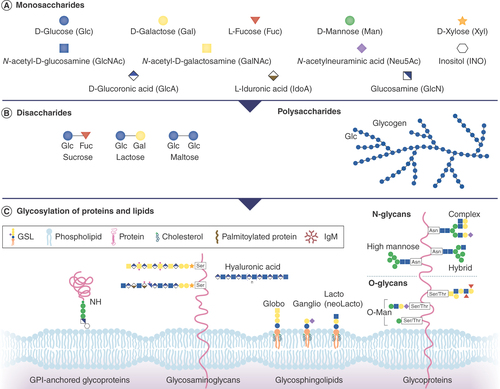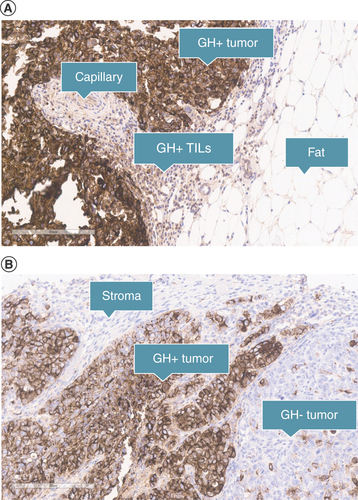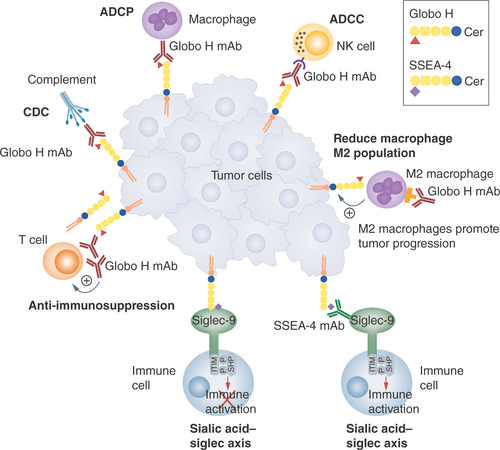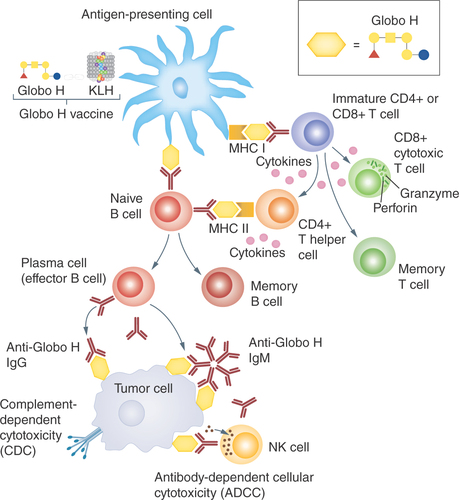Figures & data
(A & B) Monosaccharides are the building blocks of disaccharides, polysaccharides and a large number of glycans. (C) Glycosylation of proteins and lipids results in the formation of glycoprotein and glycolipid complexes such as the GSLs.
GSL: Glycosphingolipid.

GSLs are involved in including and excluding proteins from microdomains as well as the direct regulation of receptors. Crosslinking of GSLs can induce signaling across the membrane and GSLs can interact with glycans (carbohydratecarbohydrate interaction, left) or with proteins (protein–carboyhydrate interaction, right) on other cells, contributing to cell–cell recognition and adhesion.
GSL: Glycosphingolipid.
Figure adapted with permission from [Citation10].
![Figure 2. Glycosphingolipid functions.GSLs are involved in including and excluding proteins from microdomains as well as the direct regulation of receptors. Crosslinking of GSLs can induce signaling across the membrane and GSLs can interact with glycans (carbohydratecarbohydrate interaction, left) or with proteins (protein–carboyhydrate interaction, right) on other cells, contributing to cell–cell recognition and adhesion.GSL: Glycosphingolipid.Figure adapted with permission from [Citation10].](/cms/asset/548fdf3c-98b3-4a11-8e06-2a161fd9855f/ifon_a_12333312_f0002.jpg)
The Globo series glycosphingolipids include SSEA-3, the precursor to SSEA-4 and Globo H, which play a role in immune suppression and angiogenesis making them targets for potential new therapies.
GSL: Glycosphingolipid.

The glycosphingolipid Globo H is expressed on the surface of multiple tumor cells including breast cancer (as shown) and there is increasing evidence that these GSL functions can modulate the immune response to tumor cells. GH expression level was assessed, and results are presented using an H-score system (0–300) H-score = (% of weak intensity × 1) + (% of moderate intensity × 2) + (% of strong intensity × 3). (A) A white 57-year-old female with infiltrating ductal carcinoma; H-score = 300. (B) A white 59-year-old female with papillary carcinoma; H-score = 185.

Table 1. Globo-H prevalence in seven cancer types by immunohistochemistryTable Footnote† created using data from Chen et al. 2020.
Targeting Globo H and SSEA-4 with monoclonal antibodies is an approach under active investigation.
ADCC: Antibody-dependent cellular cytotoxicity; ADCP: Antibody-dependent cellular phagocytosis; CDC: Complement-dependent cytotoxicity; NK: Natural killer.

An investigational immune stimulant (vaccine) comprising the Globo H hexasaccharide epitope is linked to the carrier protein keyhole limpet hemocyanin (KLH). The mechanism of action of KLH facilitates a more vigorous immune response given the weak antigen. Globo H induces anti-Globo H IgG and IgM that recognize Globo H expressed on the surface of 60–80% of breast cancer cells. The IgM antibodies recruit complements to attack the tumor cells, while the IgG antibodies guide NK cells to destroy the tumor.
ADCC: Antibody-dependent cellular cytotoxicity; CDC: Complement-dependent cytotoxicity; MHC: Major histocompatibility complex; NK: Natural killer.

